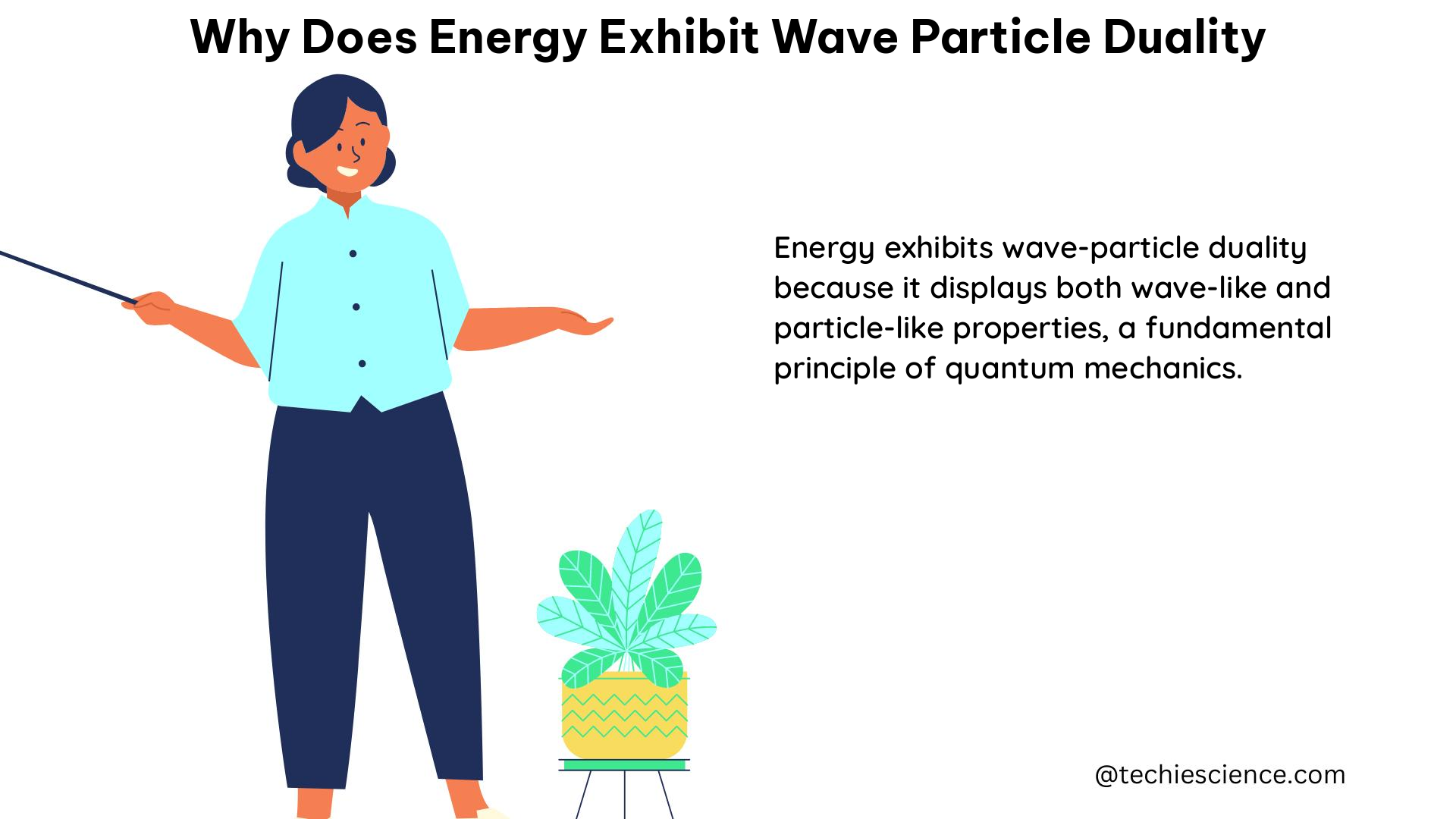Energy, whether in the form of light or matter, exhibits a fundamental property known as wave-particle duality, which is the concept that quantum entities can exhibit both particle and wave-like behaviors depending on the experimental circumstances. This duality arises from the inability of classical physics to fully describe the behavior of quantum objects.
The Dual Nature of Light
Initially, light was thought to behave solely as a wave, exhibiting properties such as refraction, diffraction, and interference. However, the photoelectric effect, where light behaves as a stream of particles (photons) carrying momentum, challenged this wave theory. The wave-particle duality of light was finally understood when physicists began studying the photoelectric effect, which allowed for an understanding of the effect and led to applications such as solar power, lasers, microscopes, microelectronics, and medicine.
The Dual Nature of Electrons

Experiments by J.J. Thomson, Robert Millikan, and Charles Wilson showed that free electrons had particle properties, such as a measurable mass. However, in 1924, Louis de Broglie proposed that electrons and all matter could be considered as waves, suggesting that particles are bundles of waves (wave packets) that move with a group velocity and have an effective mass. This theory led to Erwin Schrödinger developing the wave equation of motion for electrons, now known as the Schrödinger equation.
The Schrödinger Equation and Wave-Particle Duality
The wave-particle duality of quantum entities can be described by the Schrödinger equation, which is a wave equation that provides the probability distribution of a quantum system’s state. The Schrödinger equation is given by:
iħ∂/∂t |Ψ⟩ = Ĥ |Ψ⟩
where i is the imaginary unit, ħ is the reduced Planck constant, ∂/∂t is the partial derivative with respect to time, |Ψ⟩ is the state vector of the quantum system, and Ĥ is the Hamiltonian operator that represents the total energy of the system.
Experimental Observations of Wave-Particle Duality
-
The Double-Slit Experiment: When particles, such as electrons, are fired at a barrier with two slits, an interference pattern is observed on the other side, indicating wave-like behavior. However, if a detector is placed at one of the slits to determine which slit the particle passed through, the interference pattern disappears, indicating particle-like behavior.
-
The Photoelectric Effect: When light is shone onto a metal surface, electrons are emitted. The energy of the emitted electrons is directly proportional to the frequency of the light, indicating particle-like behavior.
Numerical Problems
-
Calculating Particle Momentum: Given the wavelength (λ) of a particle, calculate its momentum (p) using the de Broglie relation:
p = h/λ, wherehis the Planck constant. -
Calculating Photon Frequency: Given the energy (E) of a photon, calculate its frequency (ν) using the Planck-Einstein relation:
E = hν.
Figures, Data Points, Values, and Measurements
- The wavelength of a particle can be measured using a diffraction grating or electron microscope.
- The energy of a photon can be measured using a photodiode or spectrophotometer.
Importance and Applications
The wave-particle duality of electrons is important because understanding this duality has led to advancements in various fields, including solar power, lasers, microscopes, microelectronics, and medicine. The theory of wave-particle duality, while not fully explaining everything in physics, is generally agreed upon by most scientists as it sufficiently explains the observations made about waves, photons, and electrons.
References
- The Surprising Origins of Wave-Particle Duality
- Wave–particle duality
- Wave-Particle Duality: Concept, Explanation & Examples

The lambdageeks.com Core SME Team is a group of experienced subject matter experts from diverse scientific and technical fields including Physics, Chemistry, Technology,Electronics & Electrical Engineering, Automotive, Mechanical Engineering. Our team collaborates to create high-quality, well-researched articles on a wide range of science and technology topics for the lambdageeks.com website.
All Our Senior SME are having more than 7 Years of experience in the respective fields . They are either Working Industry Professionals or assocaited With different Universities. Refer Our Authors Page to get to know About our Core SMEs.